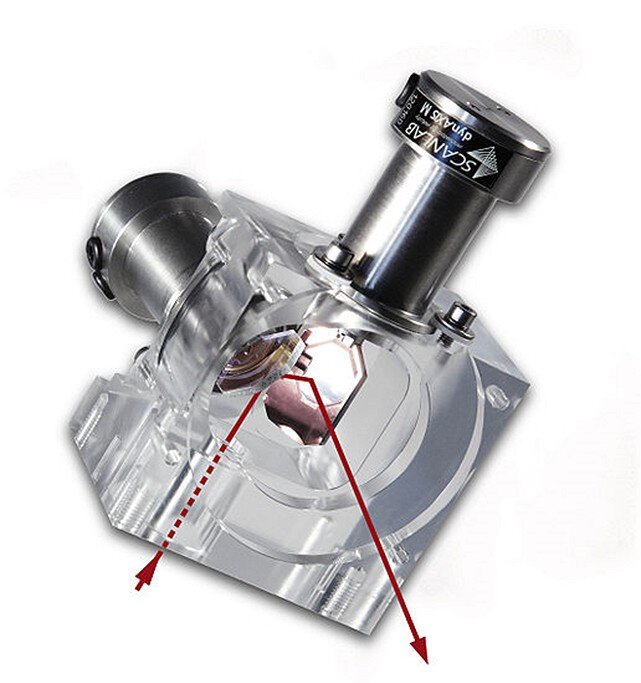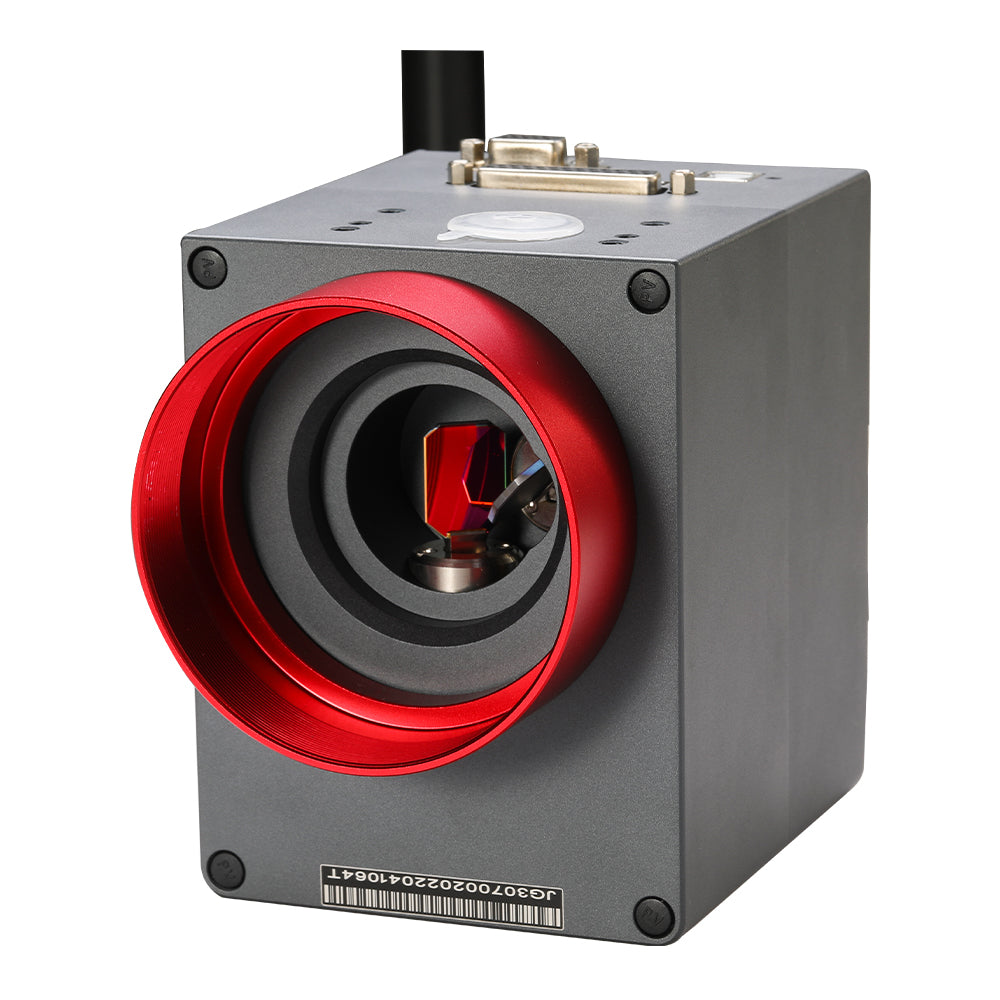The Advantages of Using a Galvo Scanner in Laser Solutions
The Advantages of Using a Galvo Scanner in Laser Solutions
Blog Article
Diverse Applications of Galvo Scanners: From Laser Engraving to Optical Communications
The assimilation of galvo scanners right into various technological domain names has introduced considerable improvements, ranging from the meticulous precision required in laser inscription to the innovative needs of optical interactions. These functional tools are not just critical in producing elaborate designs on diverse materials but additionally play an essential duty in boosting the accuracy of medical treatments and imaging. Moreover, their application encompasses industrial manufacturing and scientific research study, where they contribute to effectiveness and technology. Exactly how precisely do these scanners revolutionize such a wide range of fields, and what future possibilities might they open?
Laser Engraving
Integrating sophisticated innovation, galvo scanners have actually revolutionized the field of laser inscription by using unequaled rate and precision. Utilizing galvanometer-based systems, these devices control laser light beams with outstanding precision, permitting complex styles and great details on numerous substratums. The quick motion of mirrors within the galvo scanners allows the laser to traverse intricate paths promptly, substantially decreasing handling times contrasted to traditional engraving techniques.
One of the key advantages of galvo scanners in laser engraving is their capability to preserve high resolution while operating at broadband. This capacity is specifically advantageous for sectors calling for in-depth and repeatable patterns, such as precious jewelry, electronics, and automobile markets. The adaptability of galvo scanners to numerous laser kinds, consisting of CO2 and fiber lasers, expands their applicability across various products like plastics, porcelains, and steels.
In addition, the integration of sophisticated software program and control systems enhances the capability of galvo scanners. Modern systems integrate functions such as real-time monitoring and flexible controls, making certain optimum efficiency under differing conditions. Therefore, businesses can achieve remarkable item quality and consistency, driving performance and advancement in laser engraving applications. This technological advancement underscores the transformative influence of galvo scanners on manufacturing processes.
Medical Applications
Medical applications of galvo scanners are progressively common, leveraging their accuracy and speed to boost various analysis devices and medical treatments. In ophthalmology, galvo scanners play an important role in retinal imaging and laser eye surgical procedures. Their capability to swiftly and precisely direct laser beam of lights enables specific improving of the cornea throughout LASIK procedures, resulting in improved person end results and quicker healing times.
In dermatology, galvo scanners are used in laser treatments for skin resurfacing, tattoo elimination, and the treatment of vascular sores. The high-speed scanning ability ensures uniform application of the laser, minimizing individual discomfort and enhancing treatment effectiveness.
Additionally, galvo scanners are important to innovative imaging modern technologies such as Optical Comprehensibility Tomography (OCT) OCT makes use of galvo scanners to get high-resolution cross-sectional pictures of organic cells, aiding in the diagnosis and monitoring of problems like macular deterioration and glaucoma.
In surgical environments, galvo scanners facilitate accurate cells ablation and cutting, improving the accuracy of minimally intrusive procedures. This precision minimizes civilian casualties to bordering cells, causing much shorter healing periods and less difficulties (galvo scanner). As medical modern technology remains to development, the function of galvo scanners is anticipated to broaden, further transforming client care and diagnostic capacities
Industrial Production

In the world of laser cutting and engraving, galvo scanners ensure that complex patterns and styles can be implemented with unparalleled accuracy, decreasing material waste and boosting product visual appeals. This ability is specifically useful in sectors such as automobile, aerospace, and electronics, where accuracy is paramount.
Galvo scanners likewise play a critical function in additive production, frequently known as my company 3D printing. By routing laser light beams with high accuracy, they facilitate the layer-by-layer building of complex geometries, contributing to the fabrication of parts with complex details and remarkable mechanical buildings.
Moreover, galvo scanners are critical in the quality assurance processes. They are employed in high-speed scanning systems to check and determine manufactured parts, guaranteeing adherence to rigorous tolerances and requirements. This not just improves product reliability however likewise decreases production downtime and expenses associated with faulty parts.
Scientific Research Study
Scientific research study substantially benefits from the sophisticated capabilities of galvo scanners, which are essential to a range of analytical methods and experimental setups. These accuracy tools allow high-speed, exact control of laser beam of lights, facilitating numerous applications in areas such as microscopy, spectroscopy, and materials science.
In microscopy, galvo scanners are critical in methods like multiphoton and confocal microscopy, giving rapid scanning and high-resolution imaging of organic samplings. galvo scanner. This enables researchers to observe cellular procedures in real-time, revealing detailed details regarding mobile structures and functions that are crucial for progressing biomedical study
Spectroscopy applications also leverage galvo scanners to route laser beam of lights with accuracy, enhancing the precision of spooky measurements. This is especially vital in Raman and fluorescence spectroscopy, where specific light beam placing directly influences the quality of the spectral information accumulated.
Moreover, in materials science, galvo scanners are made use of for laser-based surface area characterization methods. These strategies, such as laser-induced malfunction spectroscopy (LIBS) and laser ablation, count on the accurate control of lasers to examine material compositions at the microscale.
Optical Communications
Galvo scanners play an essential role in the field of optical communications, where their capability to precisely regulate laser light beams is crucial for improving information transmission efficiency and reliability. These scanners are essential in managing the instructions and modulation of laser beam of lights, which act as providers for high-speed information transfer throughout fiber optic networks. The agility and accuracy of galvo scanners make it possible for fast changes in light beam positioning, thus maximizing the alignment and focus required for seamless information transmission.
One substantial application of galvo scanners in optical communications is in free-space optical (FSO) interaction systems. In these systems, data is transferred through the atmosphere why not try these out using laser beams, necessitating precise control to preserve placement between transmitting and getting terminals regardless of climatic disturbances. Galvo scanners promote this by dynamically adjusting the beam's course, thus making certain constant connection.
In addition, galvo scanners are essential in wavelength-division multiplexing (WDM) systems. They help in the specific option and combination of different wavelength channels, which enhances the general data transmission capability of fiber optic networks. By making it possible for exact beam guiding and modulation, galvo scanners significantly improve the performance and scalability of optical communication facilities, making them important in contemporary telecommunications.

Conclusion
Finally, galvo scanners act as essential tools across a wide range of areas, from laser engraving and medical applications to commercial production, clinical research study, and optical interactions. Their capacity to supply high-speed, high-resolution precision and reliable beam control dramatically improves performance and development in these areas. As technology remains to advance, the flexibility and critical importance of galvo scanners are expected to expand, further strengthening their role in modern industrial and clinical methods.
The integration of galvo scanners into different technical domain names has actually ushered in considerable advancements, ranging from the meticulous precision needed in laser engraving to the innovative demands of optical interactions. The adaptability of galvo scanners to various laser kinds, consisting of CO2 and fiber lasers, widens their applicability throughout different materials like plastics, porcelains, and steels.
By making it possible for precise and fast positioning of laser beams, galvo scanners significantly enhance the performance and quality of producing procedures.
Galvo scanners play a pivotal function in the area of optical interactions, where link their capacity to specifically manage laser light beams is important for enhancing information transmission performance and reliability.In verdict, galvo scanners serve as vital devices across a wide variety of fields, from laser inscription and medical applications to industrial production, clinical research, and optical interactions.
Report this page